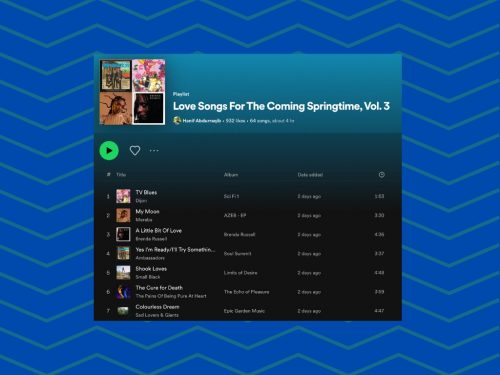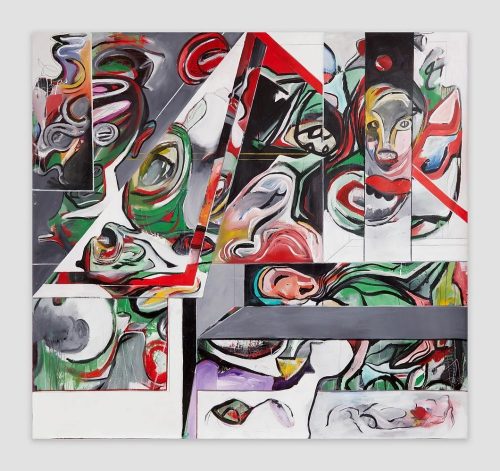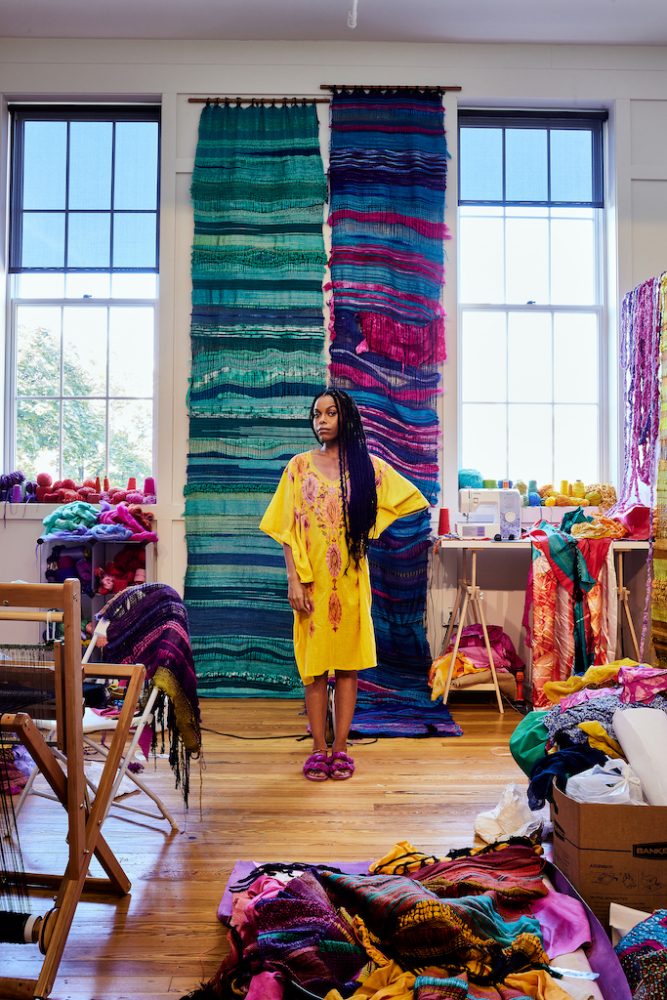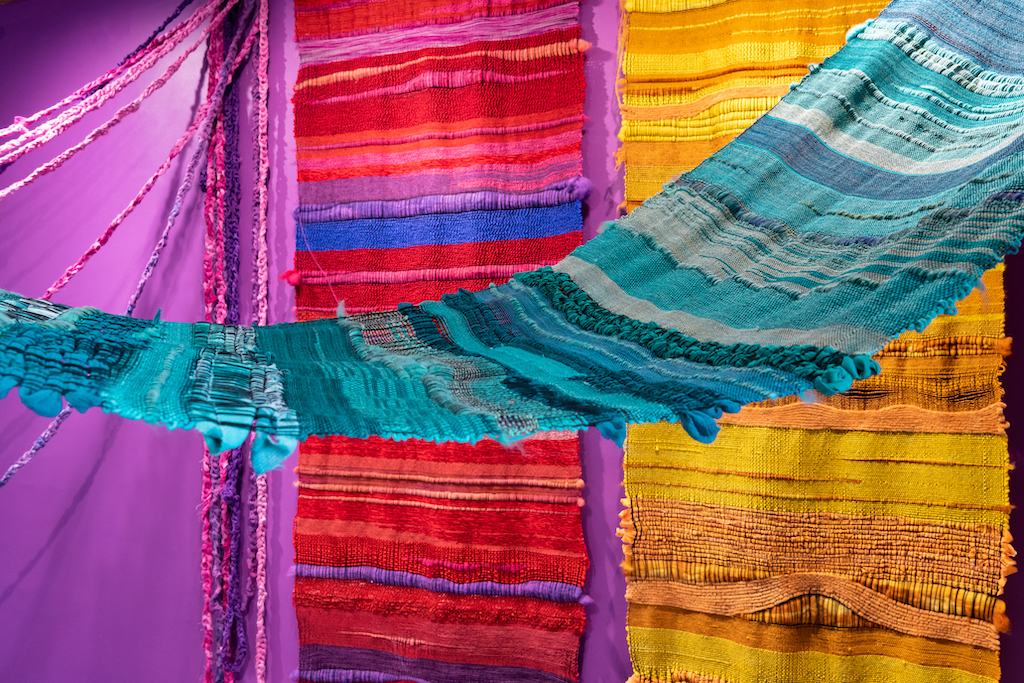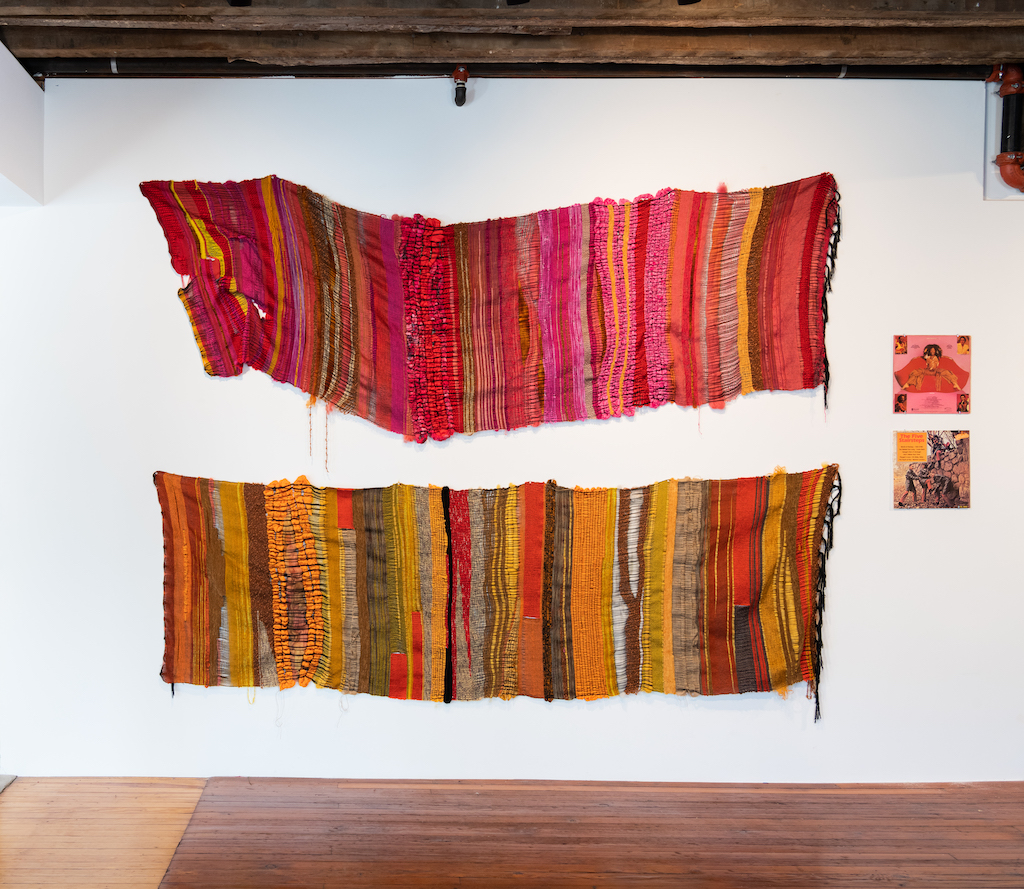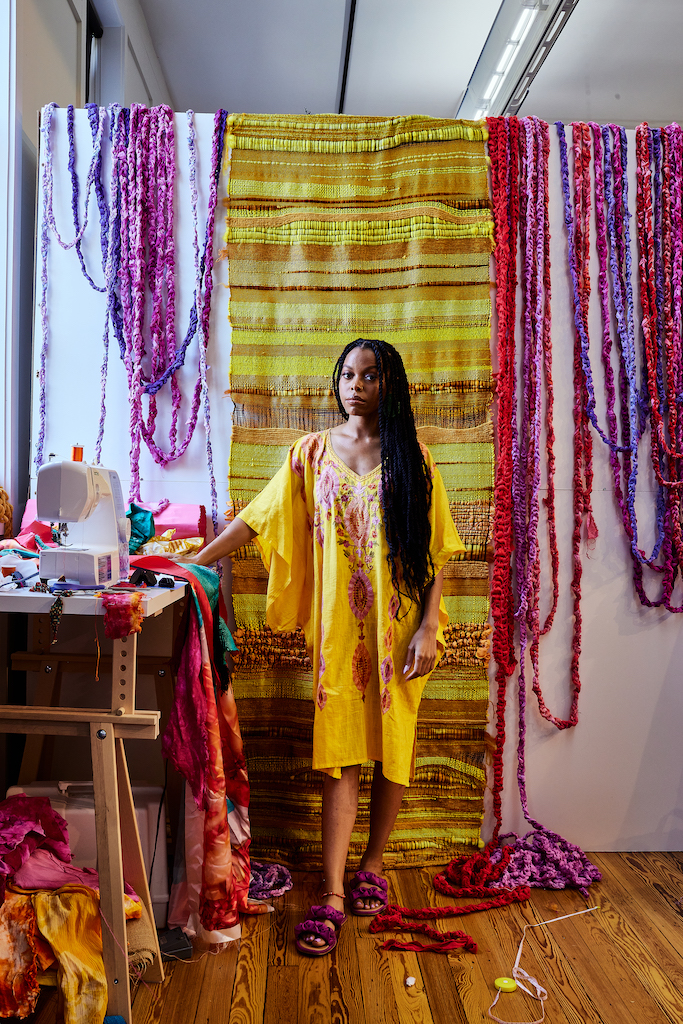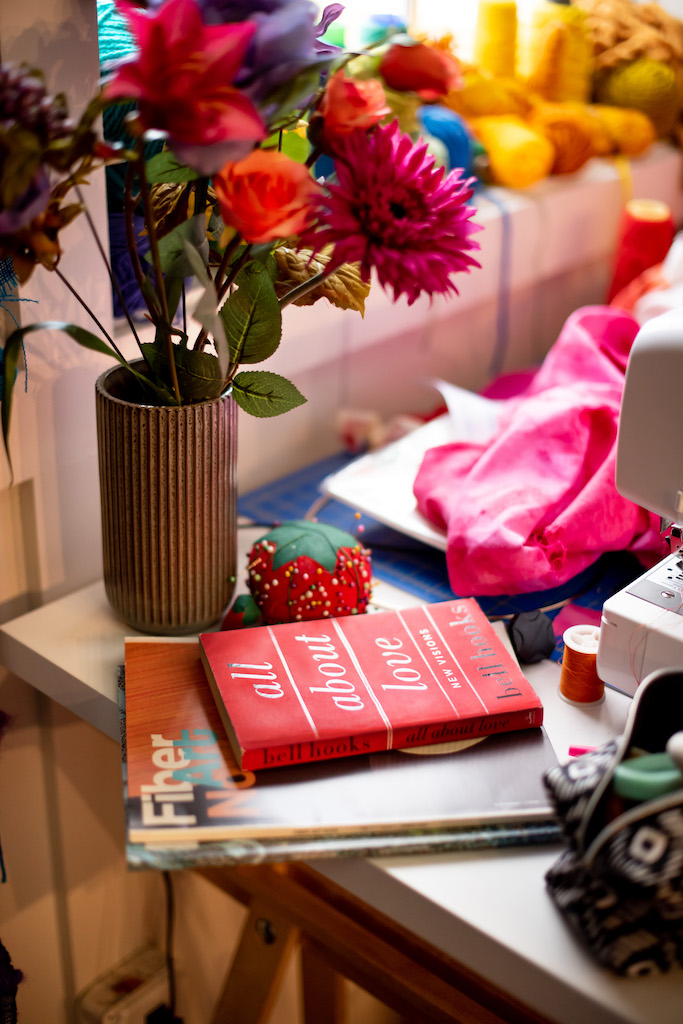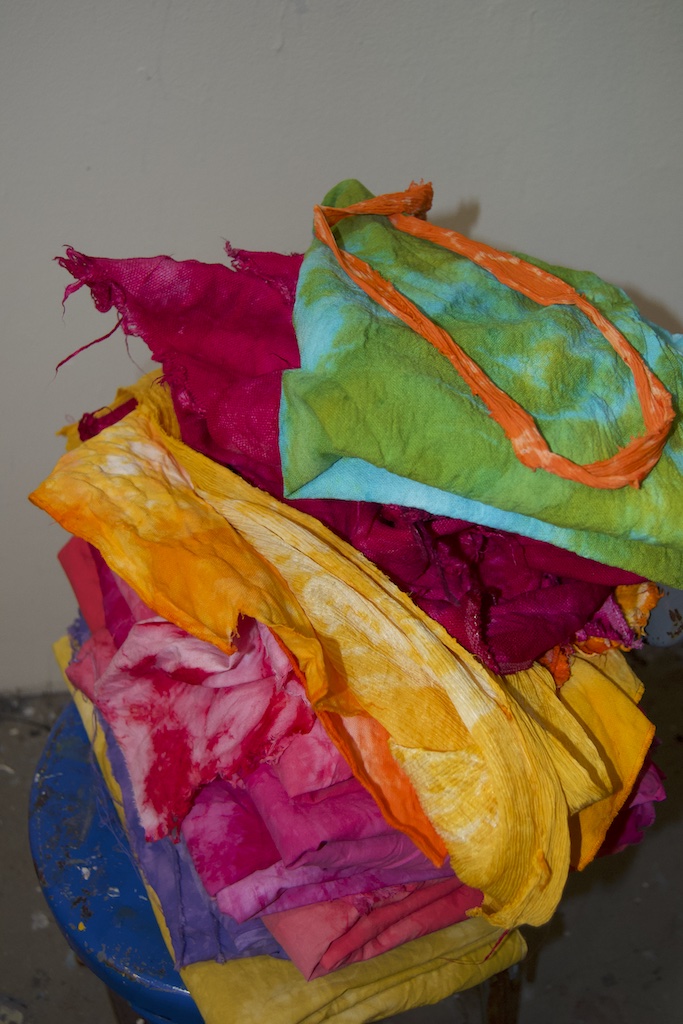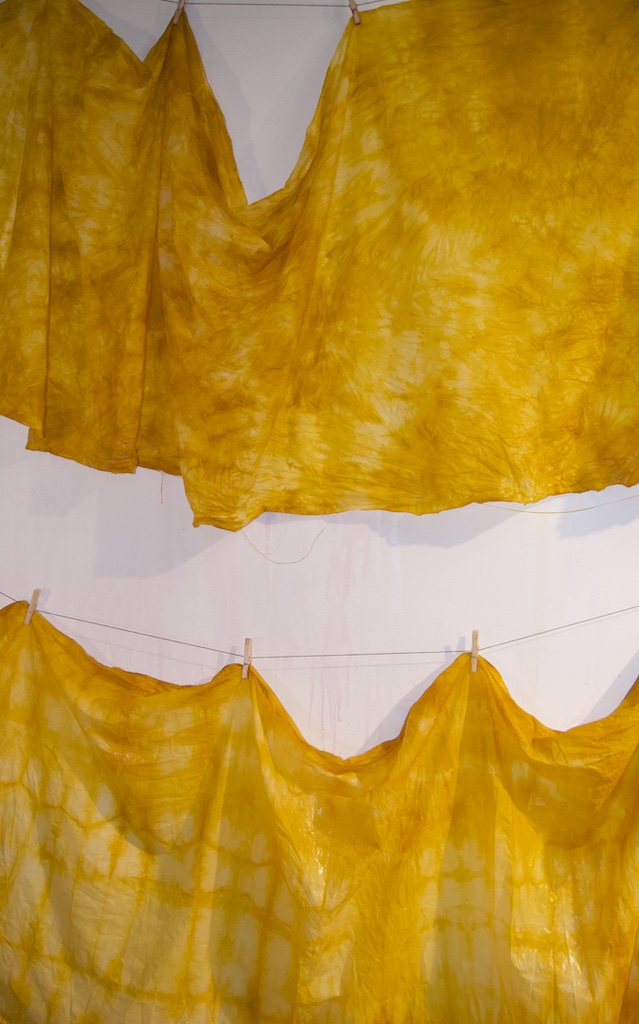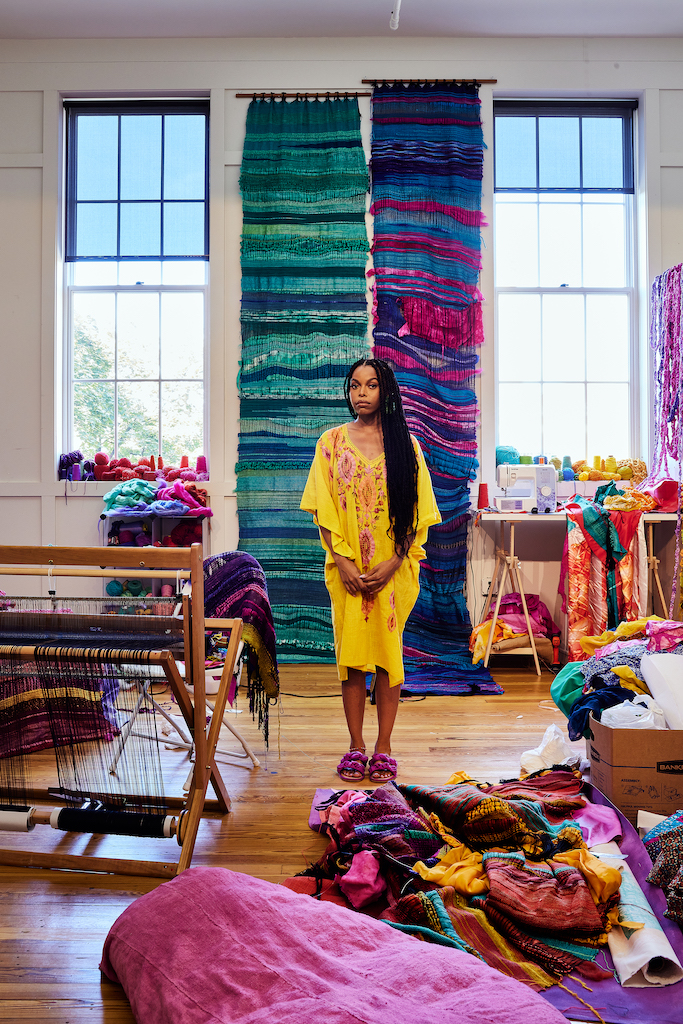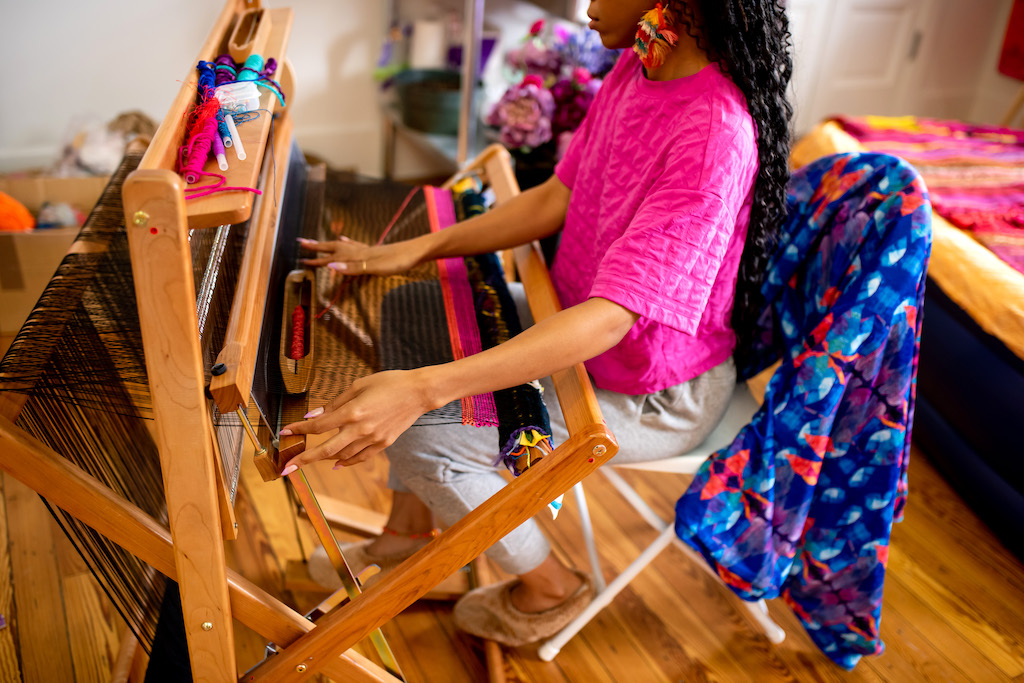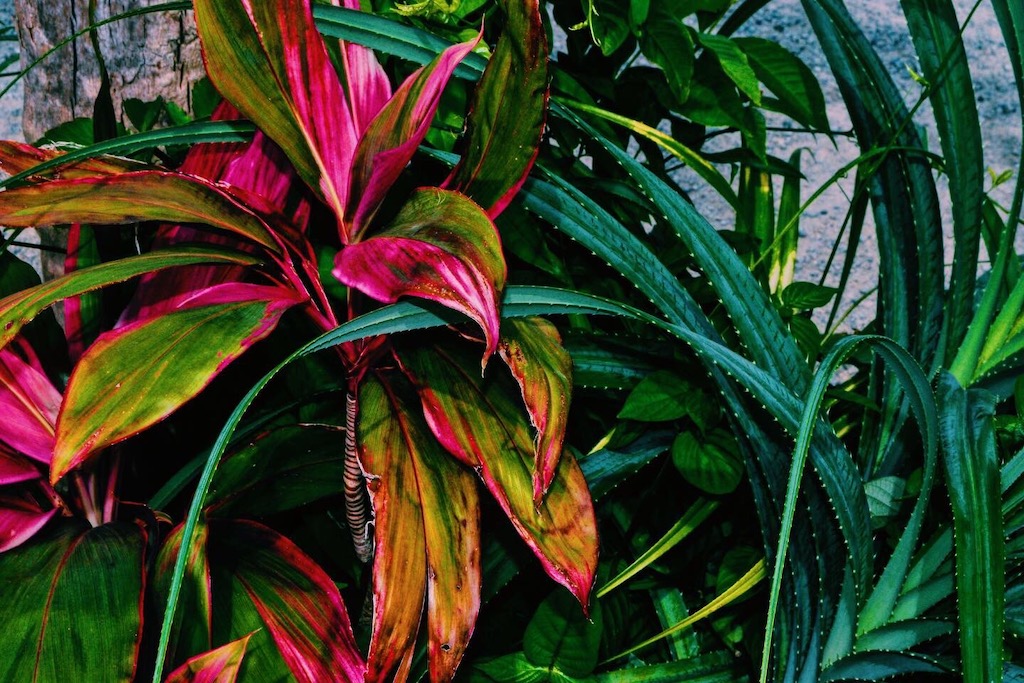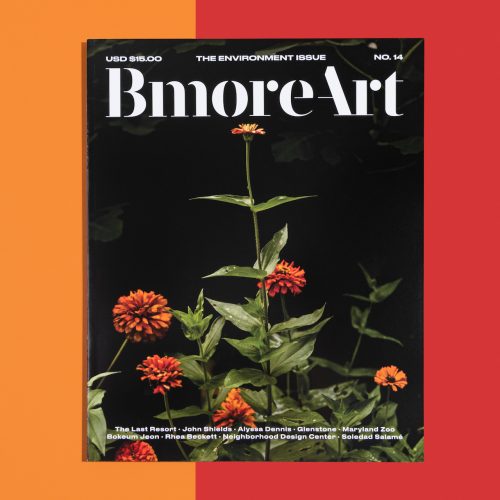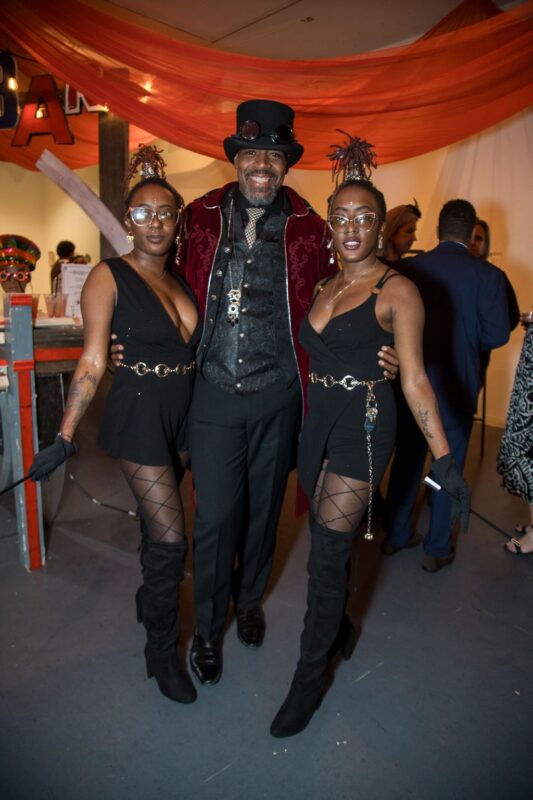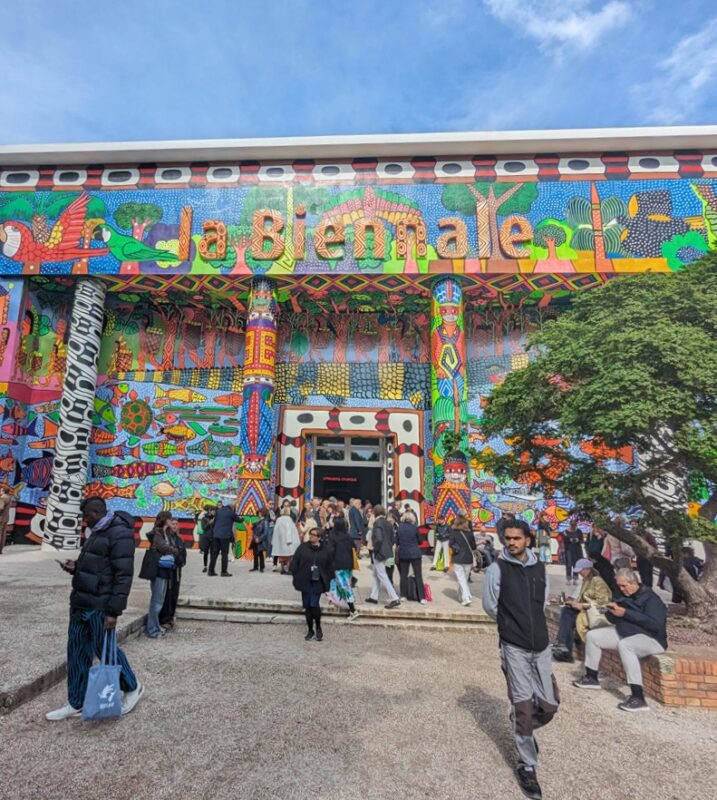Aliana Grace Bailey grew up in a creative household, guided by her mother’s repeated phrase, “Find your life’s passion, make your life’s work, and give back to others.” As a child, she saved things—cotton balls, sticks and fabric—as well as found objects. Her parents gave her full reign over her childhood room.
“My bedroom was spray painted on the ceiling and had things hanging down,” she says. “I had lots of posters, lots of paintings— I had complete creative control in my bedroom, so it was a nice little studio setup.” These materials have come full circle in her interdisciplinary practice today where she frequently employs yarns and cotton fabrics into large and vibrant tapestries.
Bailey is a curious person and a lifelong scholar who has earned degrees and certificates in art, social work, and teaching before most recently completing her MFA in Community Arts at MICA in 2020. A D.C. native, the artist has moved around the DMV frequently since graduate school and will complete a residency at Elsewhere in Greensboro, NC later this year and was just named a 2023 Sondheim Semifinalist last week.
While her textile work feels like the natural destination for her childhood obsession with material, Bailey has only been weaving for the past year or so. Spurred by a short workshop she took in New York, she decided it was true love and started making her own frame looms. But even as she taught others to make frame looms, she realized that it wasn’t scratching the same itch as the larger floor loom she had used in the New York workshop. Soon she bought her own floor loom and started making a new body of work.
